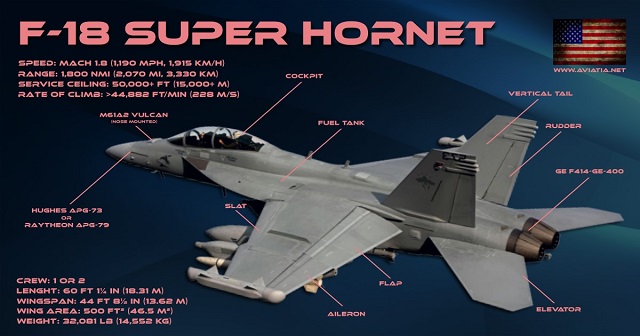Rafale vs F/A-18E/F Super Hornet: Boeing, an American aerospace company, is planning to fly two Super Hornet fighter jets to Goa for operational demonstrations before its potential buyer, the Indian Navy. The aircraft is specifically designed for carrier operations.
Alain Garcia, the VP of Boeing’s India Business Development, underscored that the fighter jets could operate from the Indian Navy warships and has the potential to meet or exceed the STOBAR performance requirements of the Indian Navy. He added that the aircraft will be a transformative capability for the Indian Navy and will significantly impact the aerospace industry.
Amid this backdrop, let us look at the differences between F/A-18E/F Super Hornet vs Dassault Rafale.
Dassault Rafale
Rafale is a twin-jet fighter aircraft from France. The aircraft can operate from both an aircraft carrier ad a shore base. It can carry out all the combat missions, ranging from air superiority and air defence, close air support, and in-depth strikes to anti-ship strikes and nuclear deterrence.

The aircraft entered into service with the French Navy in 2004 and with the country’s Air Force in 2006. It boasts of being the second most seasoned fighter globally and has been combating proven since 2007.
F/A-18E/F Super Hornet
Boeing F/A-18E/F Super Hornet is a twin engine, multirole fighter aircraft. These variants are based on McDonnell Douglas F/A-18 Hornet. The aircraft can conduct day or night strikes with precision-guided weapons, fighter escort, close air support, suppression of enemy air defences, maritime strike, reconnaissance, forward air control, and tanker missions.

With its advanced networking and open architecture design, the aircraft can jointly work with the Indian Navy’s P-81 and other US-origin aircraft. The Super Hornet entered service with the US Navy in 1999.
Dassault Rafale vs F/A-18E/F Super Hornet
Size Comparison
| CATEGORY | DASSAULT RAFALE | F/A-18E/F SUPER HORNET |
| Length | 15.27 m – 50 ft 1 in | 18.4 m – 60.1 ft |
| Wingspan | 10.80 m – 35 ft 4 in | 13.65 m – 45 ft 0 in |
| Wing area | 45.7 m² – 492 ft² | 46.5 m² – 500 sq ft |
| Height | 5.30 m – 17 ft 3 in | 4.88 m – 16.0 ft |
| Weight | 10,100 kg – 22,6k lb | 14,500 kg – 32,0k lb |
| Power | 2 x 75 kN – 17k lbf | 2 x 97 kN – 22k lbf |
Dogfight (close to the medium range) Ratings
| CATEGORY | DASSAULT RAFALE | F/A-18E/F SUPER HORNET |
| Cannon | GIAT 30M/719B | M61A1 Vulcan |
| Caliber (mm) | 30 mm | 20 mm |
| Rate of Fire (rpm) | 2500 rpm | 6000 rpm |
| Muzzle Velocity | 1025 m/s | 1050 m/s |
| Size Point 10%-30% | 20% | 20% |
| Manoeuvrability | 9.3 | 7,8 |
| Thrust/Weight Ratio | 1,13 | 1.03 |
| AAM (first) | MBDA MICA | AIM-7 Sparrow |
| Operational range | 0.2 – 50 km | 0.2 – 50 km |
| AAM (second) | R.550 MAGIC II | AIM-9 Sidewinder |
| Operational range | 0.3 – 15 km | 0.5 – 30 km |
| Dogfight Rating | 76% | 57% |
BVR (Beyond Visual Range) Ratings
| CATEGORY | DASSAULT RAFALE | F/A-18E/F SUPER HORNET |
| BVR AAM missile | MBDA Meteor | AIM-120 AMRAAM |
| AAM origin | NATO | USA |
| Year | in 2013 | in 1997 |
| Range (mile) | 62 | 45 |
| Range (km) | 100 | 75 |
| Speed (mph) | 2640 | 2640 |
| Speed (km/h) | 4248 | 4248 |
| Radar | Thales RBE2-AA | AN/APG-79 |
| Radar overall rating | excellent | excellent |
| BVR Technology | 85% | 83% |
| BVR Def. Tech. | 85% | 80% |
| RCS – Radar Cross Section | 0.5-2.0 | 1.0-2.5 |
Overall and BVR ratings
| CATEGORY | DASSAULT RAFALE | F/A-18E/F SUPER HORNET |
| BVR Rating | 90% | 83% |
| Armament | 8.6/10 | 7.9/10 |
| Technology | 8.5/10 | 8.9/10 |
| Avionics | 8.4/10 | 9.0/10 |
| Manoeuvrability | 9.3/10 | 7.8/10 |
| Rate of Climb | max. 300 m/s – 60k ft/min | max. 228 m/s – 44k ft/min |
| Thrust/Weight | 1.13 | 1.03 |
| Service Ceiling | 17 km – 55k ft | 15 km – 50k ft |
| Speed | 2.00 Mach | 1.80 Mach |
| Fuel Economy | 0.70 km/l – 1.65 NM/gallon | 0.60 km/l – 1.21 NM/gallon |
| Unit Cost | 130.000.000 USD | 80.000.000 USD |
| Overall Rating | excellent | very good |
Source: Aviatia
You might be interested in reading: Difference between Rafale and Su-35S
India's Tejas LCA vs Pakistan's JF-17 Thunder Fighter Jet: Which one is better?
Comments
All Comments (0)
Join the conversation